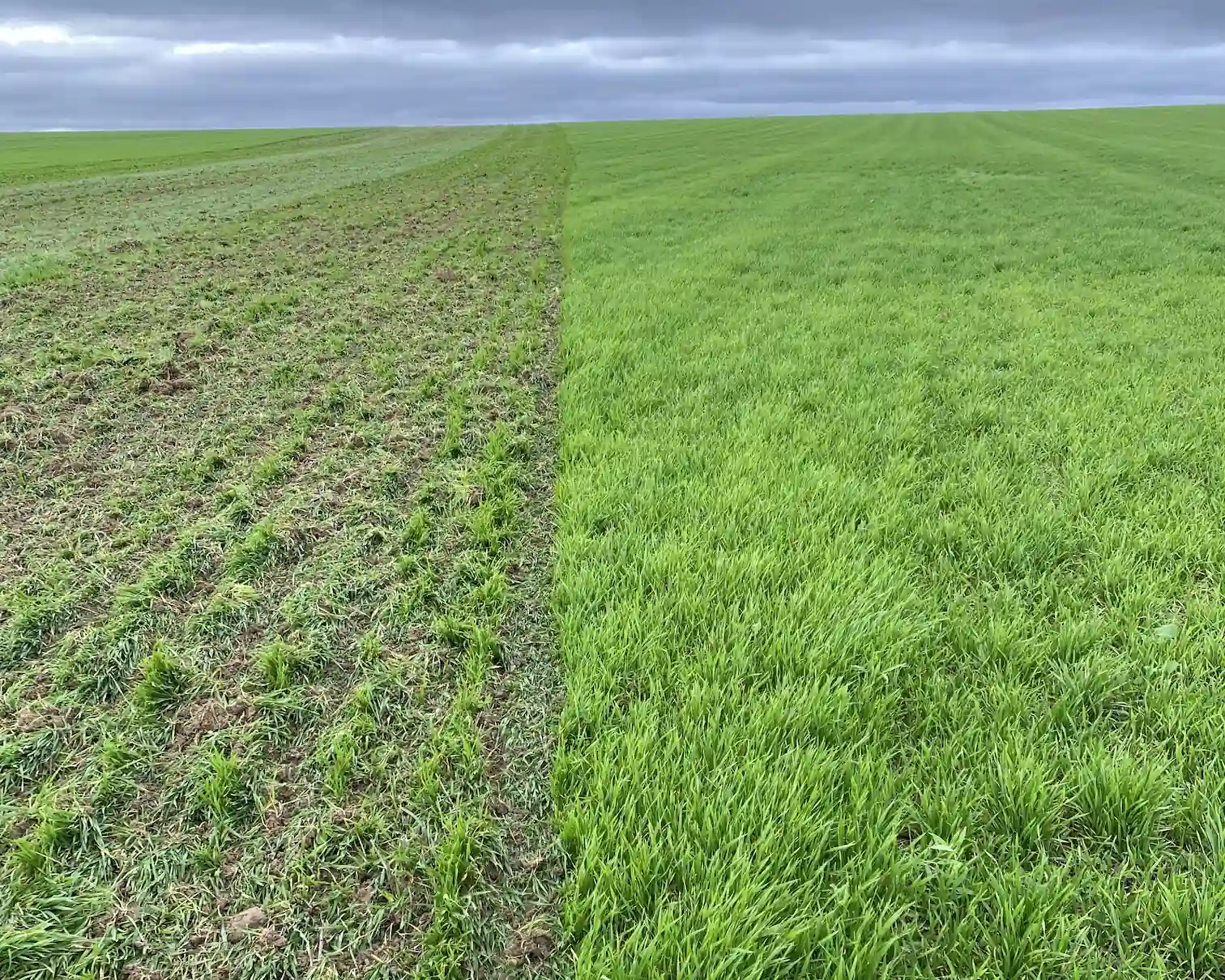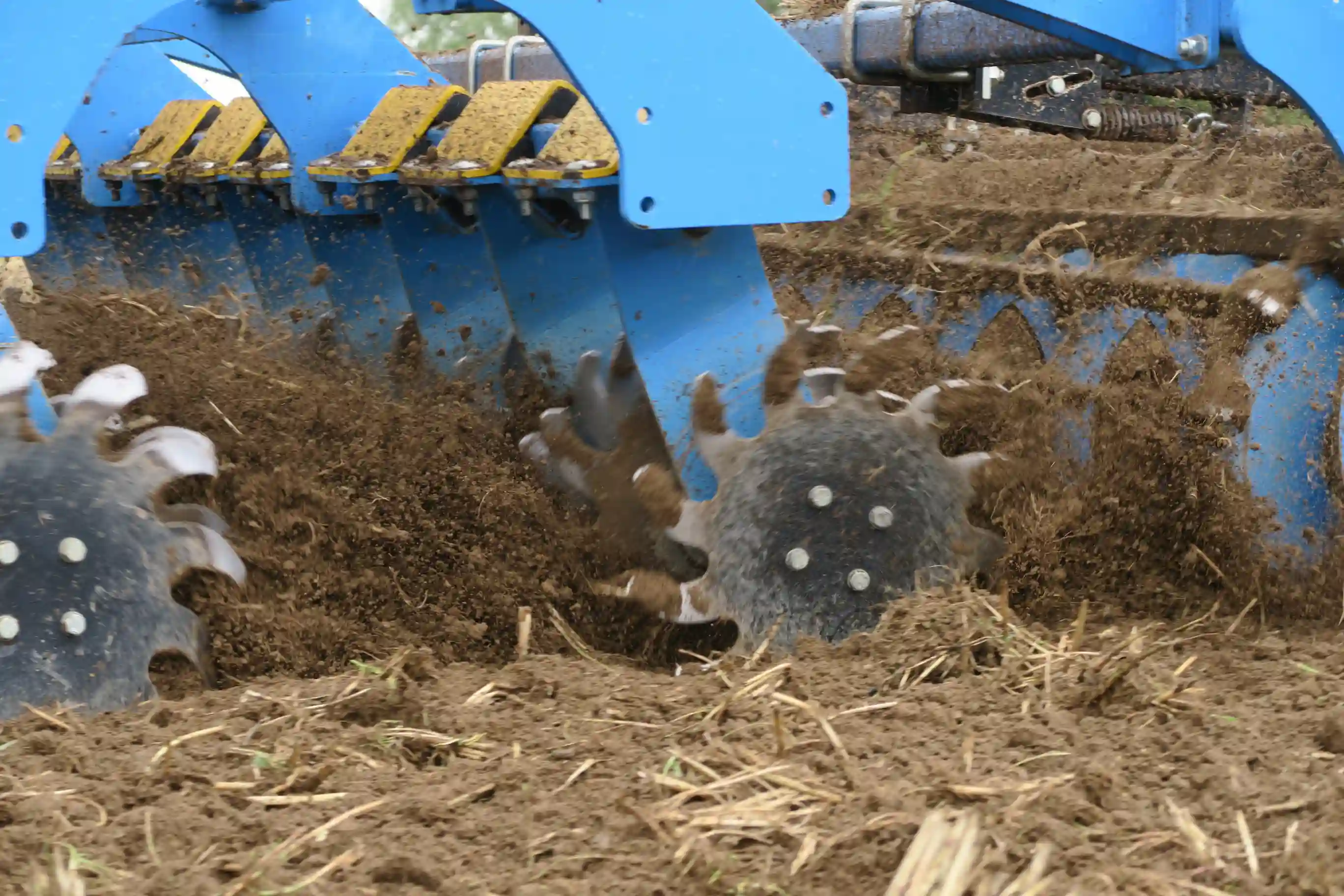
Retains soil moisture
The mulch layer preserves the moisture in the soil by preventing evaporation. It also helps to maintain a cool temperature by protecting the soil from the sun’s rays. This soil cover allows rainwater to penetrate deeper layers more quickly, with the help of macrofauna that increase macroporosity at the surface.
Prevents weeds from growing
In the case of unburied mulch, the ground cover will prevent the development of weeds simply by smothering them.
In the case of buried mulch, mechanical work will have exposed weed seeds on the surface. These will then be exposed to their natural enemies (birds, rodents, insects). The remaining seeds will be in perfect conditions to germinate. They can then be destroyed with a second pass to ensure perfect “false seeding”.




